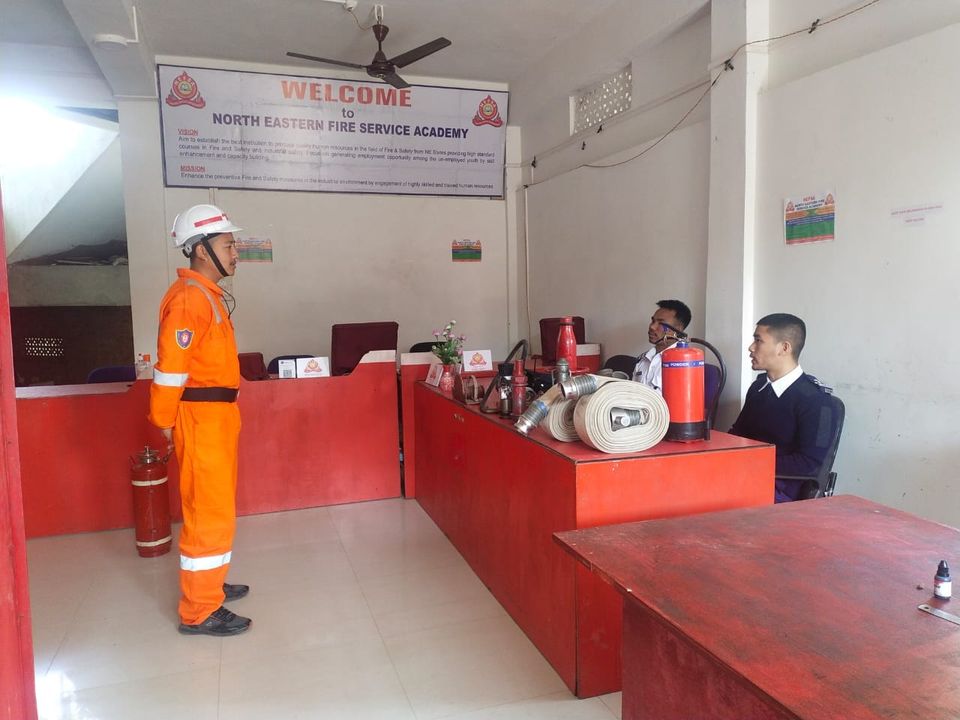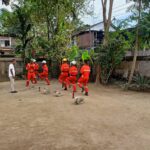Fire drills are more than a routine alarm and an evacuation walk — they’re a practical rehearsal that teaches students, faculty, and staff what to do when seconds count. When done right, drills build muscle memory, reduce panic, reveal weaknesses in plans and infrastructure, and ultimately save lives. NEFSA helps schools and colleges design, run and evaluate drills that are realistic, educational, and child-sensitive.
Why fire drills matter in educational institutions
Children and young adults are a vulnerable population in emergencies: unfamiliar buildings, crowding, and sometimes limited mobility mean schools must be exceptionally prepared. Fire drills train everyone to react quickly and calmly, reducing confusion and preventing injuries during a real event. Research shows that integrating prevention education into drills increases the safety benefit and encourages correct behaviour rather than alarm fatigue.
Measurable benefits of regular, well-designed drills
-
Build muscle memory and faster responses. Repetition helps students and staff perform evacuation steps instinctively under stress. Studies and school-district evaluations show measurable improvement in procedure compliance across repeated drills.
-
Identify physical and procedural gaps. Drills reveal blocked exits, poor signage, unclear assembly points, or gaps in assistance for people with disabilities — issues that paperwork alone can’t catch.
-
Reduce panic and emotional trauma (when done appropriately). When drills are age-appropriate, explained beforehand, and followed by debriefs, they reduce panic. (Note: some drills—like active-shooter simulations—can increase anxiety if mishandled; tailor drills to age and context.)
-
Improve coordination with local emergency services. Mock drills involving local fire departments and emergency responders strengthen real-world response and community relationships. Recent mock-drill campaigns across Indian districts demonstrate this benefit.
How often should schools and colleges run drills?
There’s no single global standard, but many education authorities recommend monthly drills or at minimum several times per year, with additional drills when new students/staff arrive or when changes to building layout occur. Regularity should balance preparedness with minimizing disruption and anxiety; each drill should have a clear learning objective. Local regulations may mandate specific frequencies — always align your schedule with your state or district guidance.
Best practices — designing effective, compassionate fire drills
-
Plan with learning outcomes: Decide if the drill is for timing evacuation, testing alternative exits, or practicing shelter-in-place.
-
Age-appropriate communication: Explain the drill’s purpose to younger children in comforting terms; avoid alarmist language.
-
Coordinate with first responders: Invite the local fire department to observe or participate—this validates plans under real response conditions.
-
Incorporate special-needs procedures: Assign roles and back-up methods for students and staff with mobility, sensory, or cognitive needs.
-
Use drills as teaching moments: Pair drills with short classroom lessons on fire prevention, alarm recognition, and basic escape decisions to prevent alarm fatigue and increase retention.
-
Debrief and improve: After every drill, collect feedback, log timings, note issues, and update evacuation plans and signage.
Common pitfalls (and how NEFSA helps avoid them)
-
Treating drills as a checkbox — Drills without objectives or debriefs teach little. NEFSA helps schools create meaningful drill plans and post-drill evaluations.
-
Overly realistic simulations without support — Some simulations can cause anxiety. NEFSA trains staff to design trauma-sensitive drills and to provide counseling or classroom follow-ups when needed.
-
Ignoring vulnerable groups — NEFSA assists institutions in writing inclusive evacuation procedures for students and staff with disabilities.
NEFSA’s offerings for schools and colleges
NEFSA provides:
-
Customized fire-drill planning and scheduling for academic calendars.
-
On-site mock drills with assessment and timed evacuation reports.
-
Hands-on training for staff in evacuation leadership, fire extinguisher use, and assisting students with special needs.
-
Awareness workshops and classroom resources to teach students fire prevention and safe behaviour.
Real-world examples & policy momentum
Across India, recent directives and safety audits have raised the bar for school safety: several states and districts now mandate safety audits, reporting of incidents, and regular emergency training for students and staff. Local mock-drill programmes—often run in partnership with municipal fire services—are increasing preparedness at the community level. NEFSA works with schools to meet these evolving regulatory expectations and public-safety goals.
Quick checklist — Ready for your next drill?
-
Do you have an up-to-date evacuation plan and floor plans posted?
-
Have you scheduled drills for this term and assigned staff roles?
-
Are assembly points clearly marked and communicated?
-
Have you practiced alternative routes and assistance for students with mobility needs?
-
Will you debrief, record timing, and fix identified issues?
If you answered “no” to any of these, NEFSA can help you design and deliver drills that work.
Conclusion — Preparedness protects futures
Fire drills are simple, cost-effective safety investments with outsized returns: lives saved, injuries prevented, and greater confidence across the school community. When drills are regular, well-planned, inclusive, and evaluated, they transform anxiety into action. NEFSA brings practical expertise, hands-on training, and community coordination to ensure your school or college is prepared not just compliant
Contact us today to know more about admissions, batch schedules, and course details.
Visit: www.nefsaindia.com
Location: Dibrugarh, Assam
For More Blogs:- Click here







